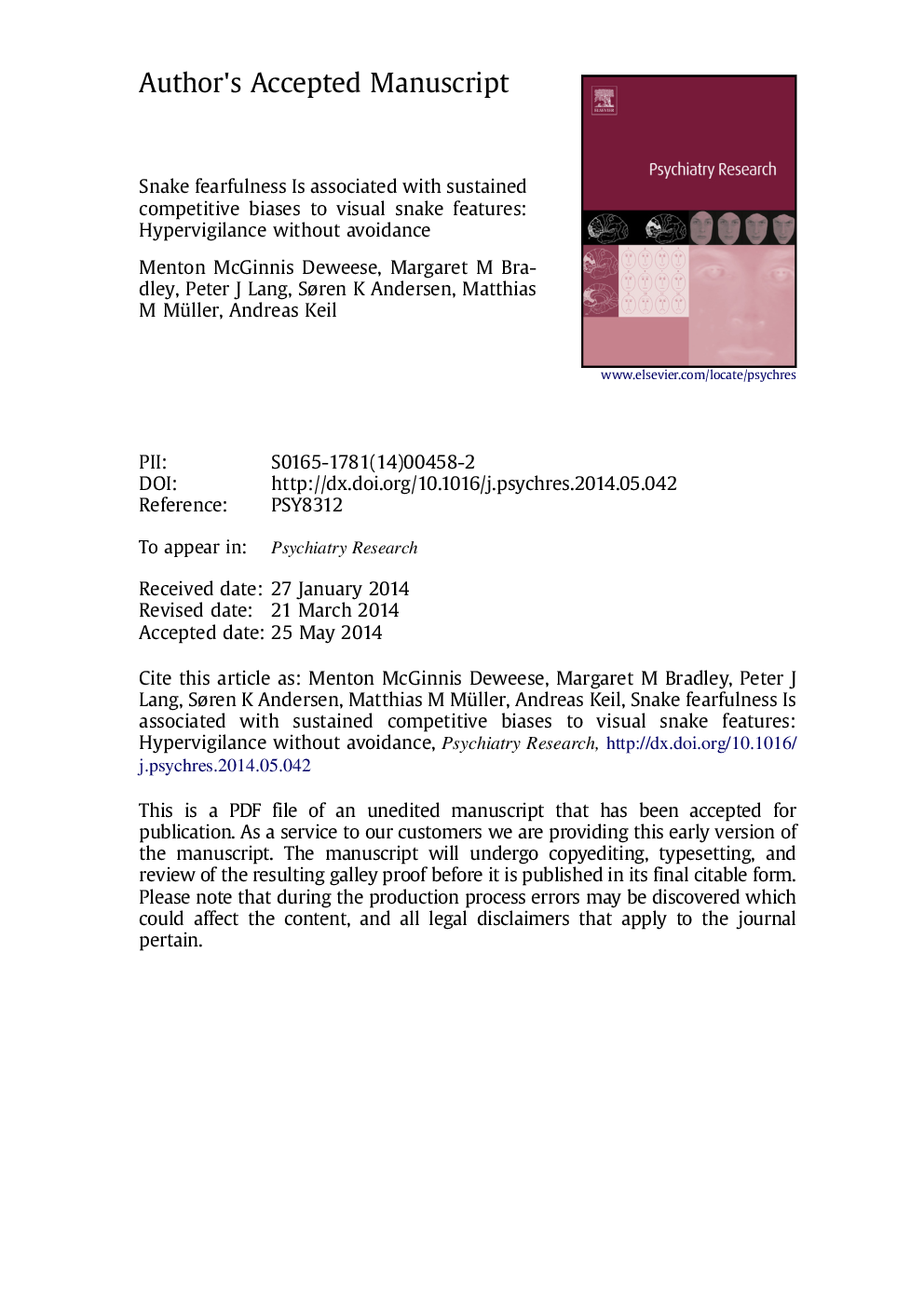| Article ID | Journal | Published Year | Pages | File Type |
|---|---|---|---|---|
| 10304250 | Psychiatry Research | 2014 | 35 Pages |
Abstract
The extent and time course of competition between a specific fear cue and task-related stimuli in early human visual cortex was investigated using electrophysiology. Steady-state visual evoked potentials (ssVEPs) were evoked using random-dot kinematograms that consisted of rapidly flickering (8.57Â Hz) dots moving randomly, superimposed upon emotional or neutral distractor pictures. Participants were asked to detect intervals of coherently moving dots, ignoring the distractor pictures that varied in hedonic content. Women reporting high or low levels of snake fear were recruited from a large sample of healthy college students, and snake pictures served as fear-relevant distractors. The time-varying amplitude of the ssVEP evoked by the motion detection task showed significant reduction when viewing emotionally arousing, compared to neutral, distractors, replicating previous studies. For high-fear participants, snake distractors elicited a sustained attenuation of task evoked ssVEP amplitude, greater than the attenuation prompted by other unpleasant arousing content. These findings support a hypothesis that fear cues prompt sustained hypervigilance rather than perceptual avoidance.
Related Topics
Life Sciences
Neuroscience
Biological Psychiatry
Authors
Menton McGinnis Deweese, Margaret M. Bradley, Peter J. Lang, Søren K. Andersen, Matthias M. Müller, Andreas Keil,
